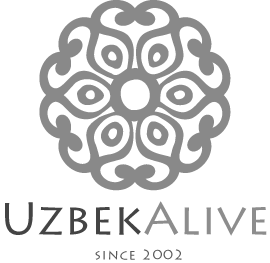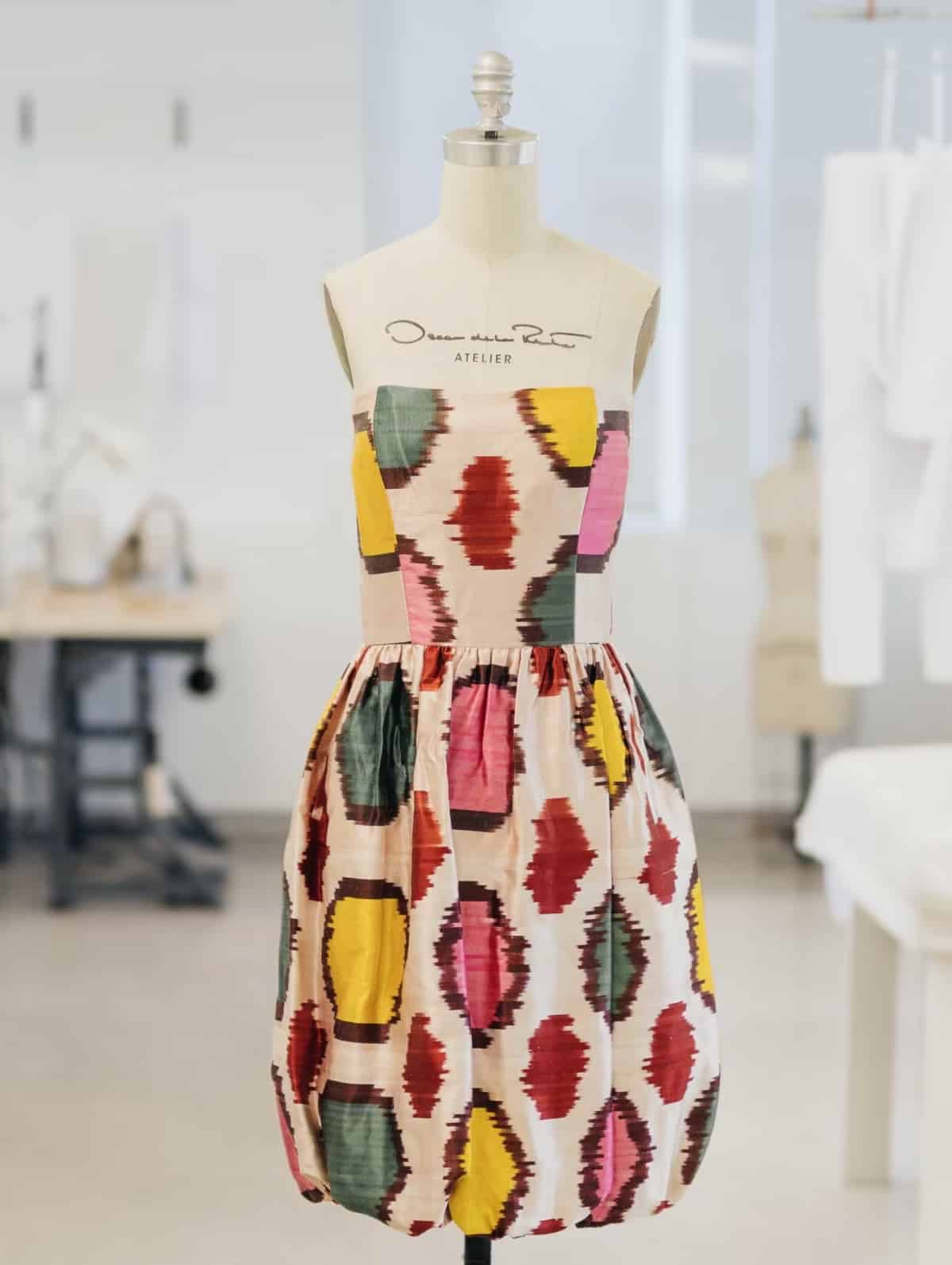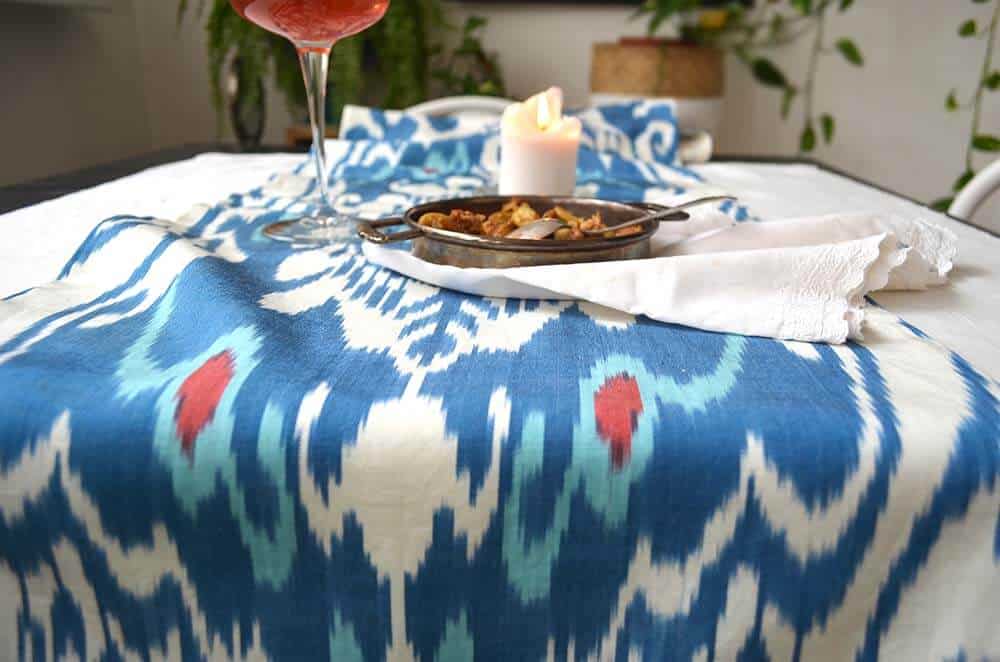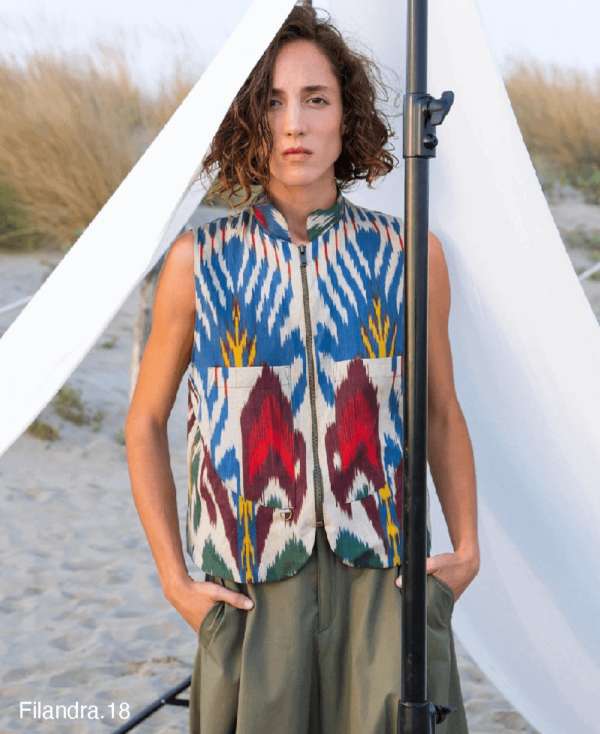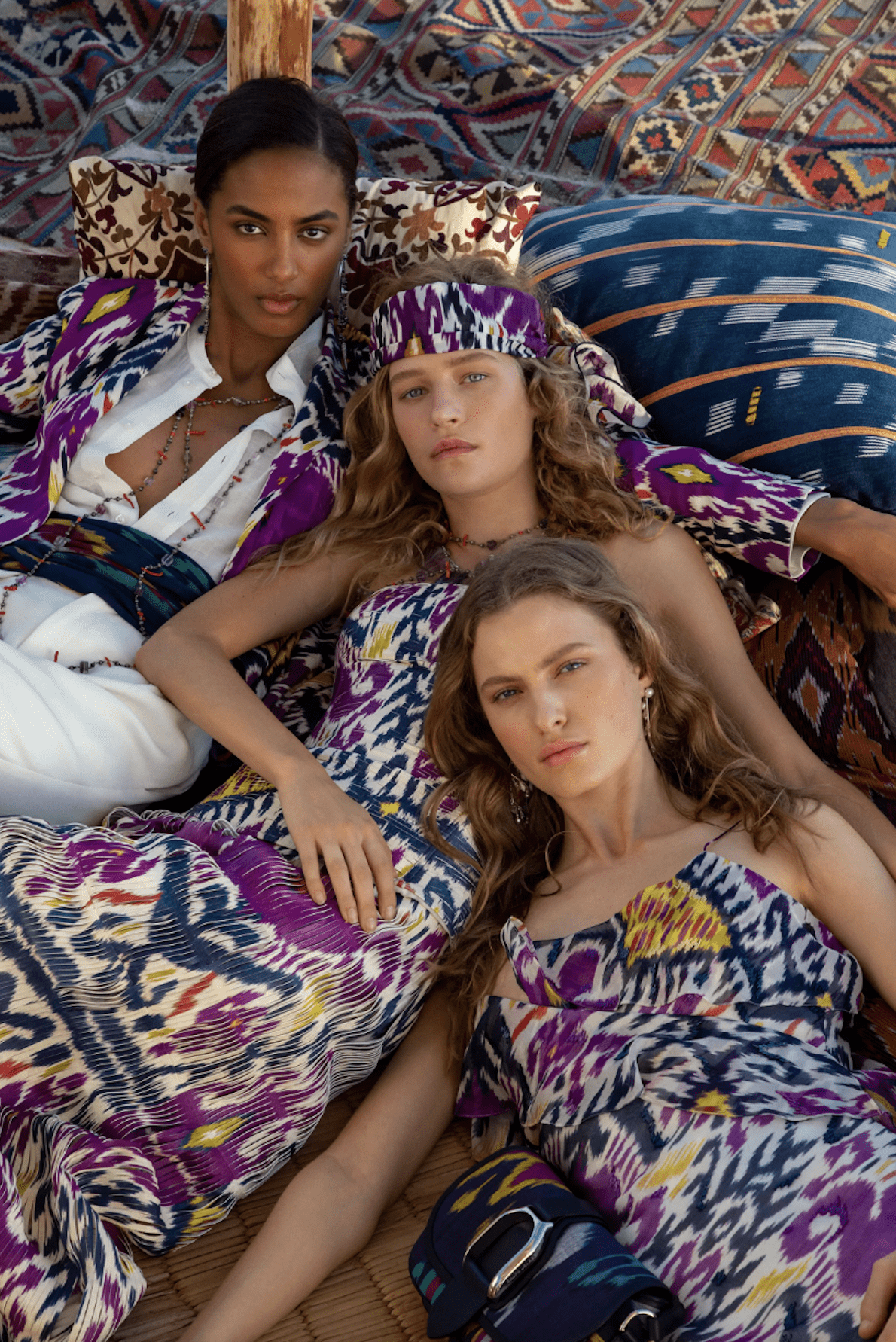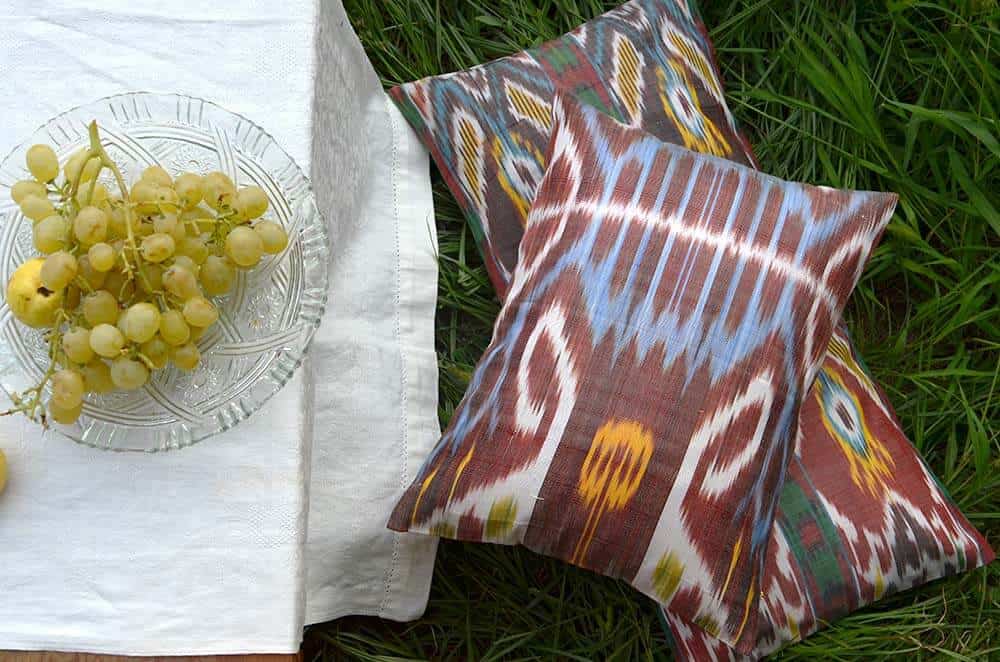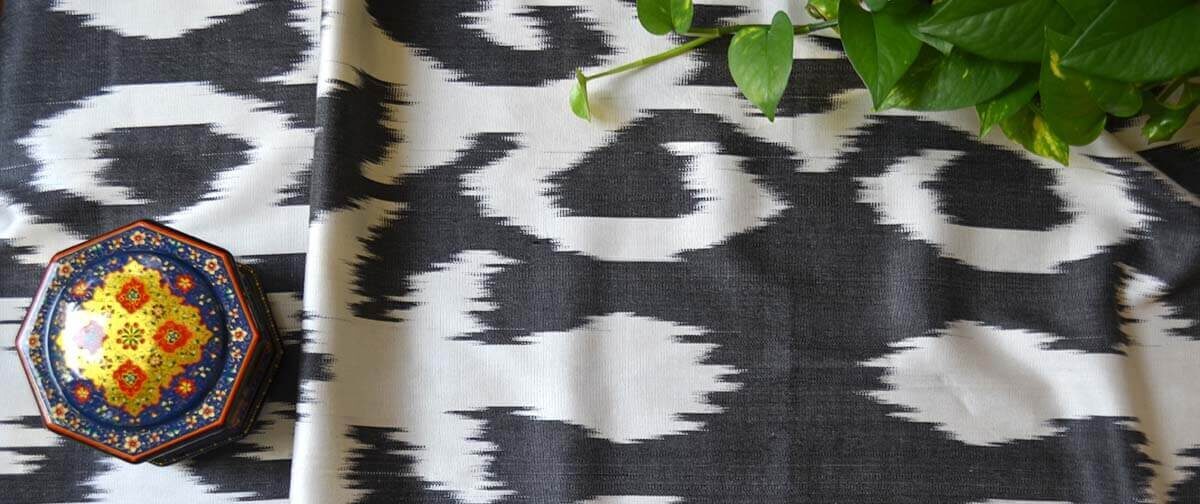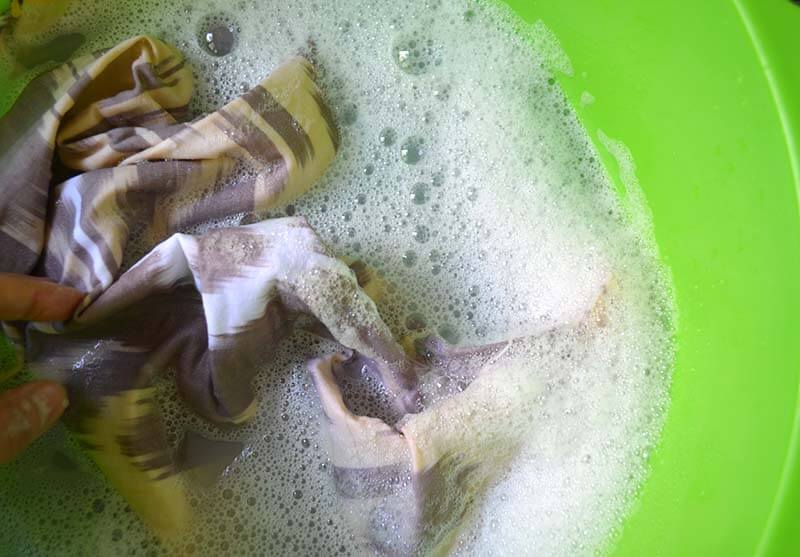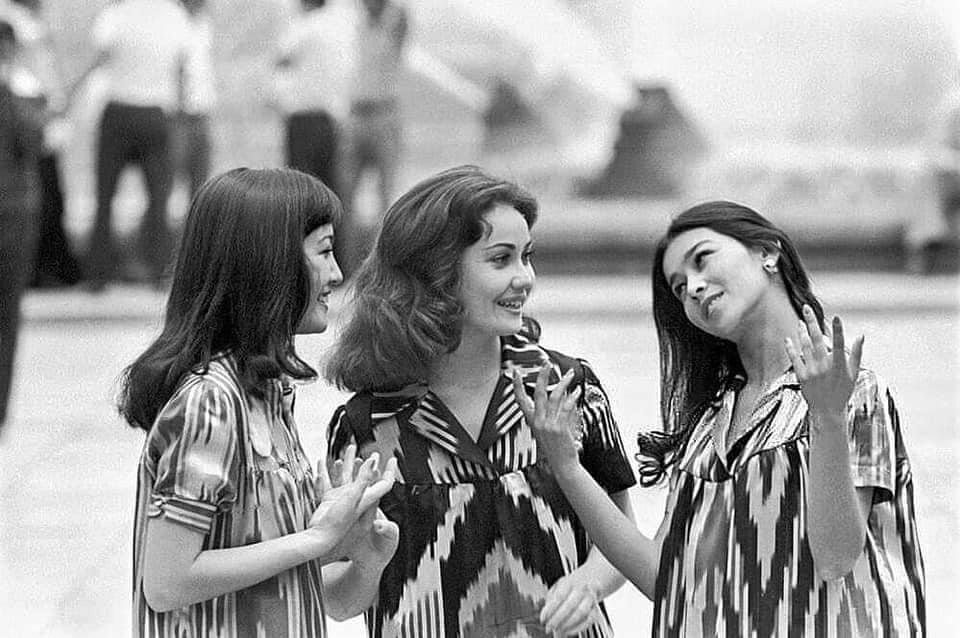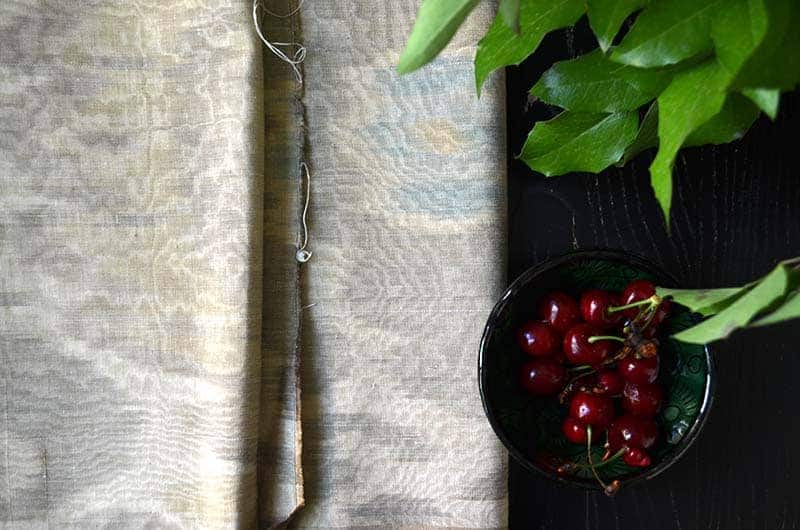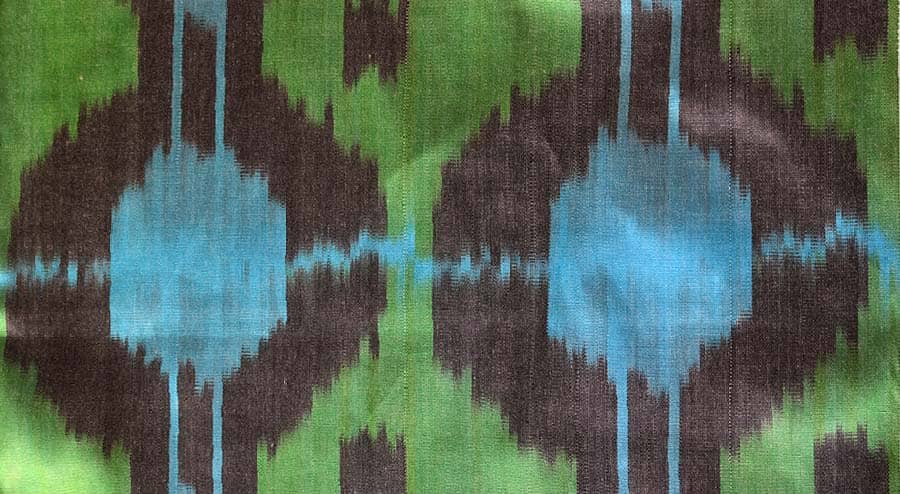Best Use of Uzbek Ikat Fabric
Uzbek ikat use varies depending on one's interests. We have customers who make them for tailoring dresses or for decorating homes. Before we dive into how Uzbek fabric uses let's start with a definition of Uzbek ikat.
Uzbek ikat fabric is an artisanal textile that is hand dyed and woven on traditional handlooms using a resist-dyeing method. This method of making the fabric is traditional to many regions of Uzbekistan with Margilan being the cradle of ikat fabric production of not only Uzbekistan but the entire Central Asia. The resulting ikat design patterns and colors are bold and unique to Uzbekistan, making them a popular choice of unique textile among fashion designers and home decorators.
It is important to note that In December 2017 the traditional methods of manufacturing Uzbek ikat fabrics were included in the UNESCO Register of Good Safeguarding practices. What does this mean? It means that the art of ikat making survived within families overcoming repressions and bans on artisanal ikat making during the Soviet era. The ikat making in Uzbekistan was safeguarded by a small community of descendants of ikat artisans over the generations until the Soviet Union collapsed and it became legal to manufacture ikats in a traditional way. We have a great post talking just about that here.
We prepared several areas where Uzbek ikat fabrics are widely used:
Hand Washable Uzbek Ikat Table Runners
Textiles add a beautiful, festive, and comforting touch to interiors and this is exactly what we had in mind when we decided to introduce hand washable ikat table runners to our collection. Textiles make our lives cozy. On top of that, Uzbek ikat fabrics have festive, almost royal looks because of their rich colors and bold ikat patterns. These are two visual characteristics that differentiate Uzbek ikats from other ethnic artisanal fabrics. Fergana Valley of Uzbekistan is an origin of these fabulous ikat fabrics where to this day they are hand dyed and handloom woven.
Where did inspiration for ikat table runners come from?
COVID-19 lockdown inspired us to introduce ikat table runners to our collection. Sharing meals with our loved became especially meaningful during the COVID isolation and we wanted the dining experience to be extra special. As a rule, table runners are designed to protect tables from spills and the dropping of food. They also have an esthetic function of decorating and creating that chic look. However, a chic appearance should not result in a extra cleaning expenses.
5 Fashion Designers To Follow Who Use Uzbek Ikat Fabrics
Many people nowadays use the Instagram because of its immense popularity for sharing visual content. If you enjoy the world of fashion and textiles, following these fashion designers who use Uzbek ikat fabrics can be both entertaining and inspirational for you.
Ikat has seen a rapid rise in popularity over the last several years, and its comeback has generated a lot of buzz on Instagram. Several Instagram accounts have managed to captivate audiences who are interested in Ikat. So if you find yourself getting lost on your Instagram feed daily in search of gorgeous Ikat patterns, we have made your job easier. We have compiled a list of the top 5 Instagram accounts of fashion designers whose Instagram accounts are worth keeping tabs on.
Ikat patterns in Ralph Lauren 2022 Resort collection
Ralph Lauren, one of the most well-known names in the American fashion industry, released the spring-summer collection 2022 in Dubai. This season's collection features ikat patterns inspired by motifs that are traditional to Uzbekistan, Tajikistan, and other cultures around Central Asia.
Ethnic designs and textiles such as ikat have always served as a source of inspiration for famous couturiers, fashion houses, designers, and artists. Oscar de la Renta and Gucci drew inspiration from the long and rich legacy of beautiful Uzbek ikat textiles and showed them on their fashion runways. Now, Ralph Lauren is the latest designer to incorporate Uzbek ikat designs into his spring collection.
5 Things To Consider Before Buying Ikat Fabrics
There is something undeniably attractive about ikat fabrics. They never fail to attract, whether they are displayed in a shop window, worn at an event, or used to make home decor or other items for the house. No matter what item you make from Ikat fabric, it will always look chic.
Ikat fabrics have their own characteristics which may or may not meet your requirements. It isn’t just about picking up a fabric with the the most beautiful ikat pattern and in beautiful colors, but a lot more. There are numerous factors to be taken into account before making that final choice.
Therefore, before directly jumping into buying ikat fabrics, you need to put some thought into how you are going to use the fabric. As in, what width of a fabric you will need, do you need to match ikat pattern and how you will care for the fabric .
7 Most Frequent Ikat Fabric Uses In Interior Design
Ikat fabrics have seen a dramatic rise in popularity in the worlds of both interior design and the fashion industry. The dyeing techniques that are used to create a distinct style of Ikat patterns are still very popular in Uzbekistan. Ikat fabric uses are infinite. Today we are going to tell you some popular ways to use them in decorating the interior of your home.
You can use the ikat fabrics in the process of embellishing the furniture upholstery, bedside headboards, pillow covers, curtains, and bedcovers. Moreover, we will show you how to subtly incorporate our ikat fabrics into your interior design to give it a rich, ethnic feel while still infusing it with a modern, stylish atmosphere.
1. Ikat Pillows
Pillows are an absolute need as a comfort item, whether they are used for decorating a couch or for snuggling on a bed. And what a luxurious way to beautify your couch or bed with ikat pattern pillows!
Ikat fabric washing experiment
Default care rule with any handwoven Uzbek ikat fabrics is dry clean. However, there are fabrics which are reasonably safe to wash. We decided to run an ikat fabric washing experiment with a new fabric we received- a pretty thick cotton silk blend ikat fabric. The idea is to use the fabric for table runners. Before we started making the runners we wanted to run a test to see how truly washable the fabric is.
A note of caution!
Please be aware that we know that this is an ikat fabric which was hand made very recently. It is not vintage. With any vintage ikat fabrics we recommend only professional dry clean.
Step 1:
We cut about 64 cm of ikat fabric for testing. Why 64 cm? Because with the width of 35 cm and length of 65 cm we can later turn this piece of ikat fabric into a wonderful ikat lumbar pillow cover.
Retro Ikat fabric from Soviet Uzbekistan
I love photography, especially black and white photography, especially black and white photography with stories. This post is about Uzbek Soviet ikat dresses made of ikat fabrics in images of 20th century.
Soviet era and Industrial Age
The Soviet Union, a newborn country in the early 20th century which united 12 relatively poor republics (lated added 3 baltic states), did not have time and resources for luxuries. The goal was to provide basic standards of living to everyone - a very noble goal, I must say, given that most people had very low standards of living. Hence, luxury fabrics like hand woven Ikats became a sign of bourgeoise and ikat making traditions became significantly simplified.
Uzbek ikat textiles – wash or dry clean?
Properly caring for ikat fabrics is the most important thing you can do to extend life of your textile products. In this post we would like to talk about washing ikat fabrics and in which cases you should consider washing versus dry cleaning. Let us start off with a bit of history.
A bit of history …
In the 19th century, a silk yarn was as expensive as gold, ikat making technique was known to a few and the ikat garments were amazingly pleasant to wear. These were the days when the ikat textiles were only available to the richest and were considered to be a true luxury item.
With time, the ikat makers thought of a way of making ikat textiles more, let’s say, democratic. They started combining luxurious silk yarns with a more affordable cotton fibers and created, so called, “adras” fabric. Adras is a beautiful and rich blend of silk and cotton fibers (usually around 50% silk and 50% cotton but percentages may vary). This brought the cost of the ikat fabrics down but by not that much – ikat fabric making still remained to be a highly manual process.
What is ikat design you see in so many fabrics?
Availability of Ikat fabric online created a lot of interest in these unique and noble textiles. The history of Ikat fabrics covers different countries where artisans independently of each other (or not so independently?) created different patterns and used various symbols. We love good stories, especially when it comes to symbols used in fabrics. This blog post is about ikat design, ikat patterns and influences affecting them.
Ikat design is about abstraction. The ikat binding technique and resist dying soften the edges of the ikat pattern making the transition of one color to the next softer, blurrier or cloudier. Hence, the local name for the technique – abr (cloud). The artisan binding the fabrics is known as “abrband” (weaver of clouds).
Ikat design and abstract art
For a land that was at crossroads of so many cultures and changing religious and political influences it was only natural and safe (!) to stick to something that is abstract. A pattern that vaguely looked like a carpet weaving comb could be seen as a lucky amulet if turned upside down.
